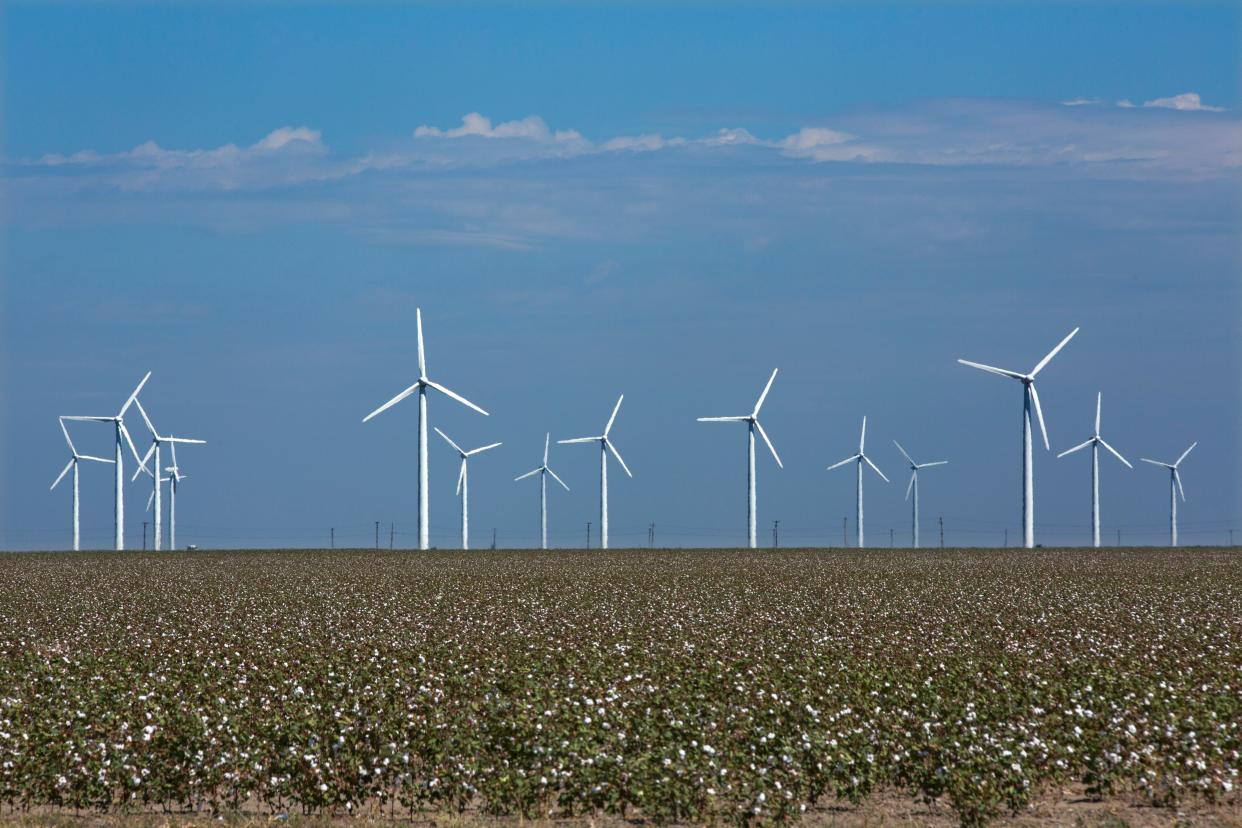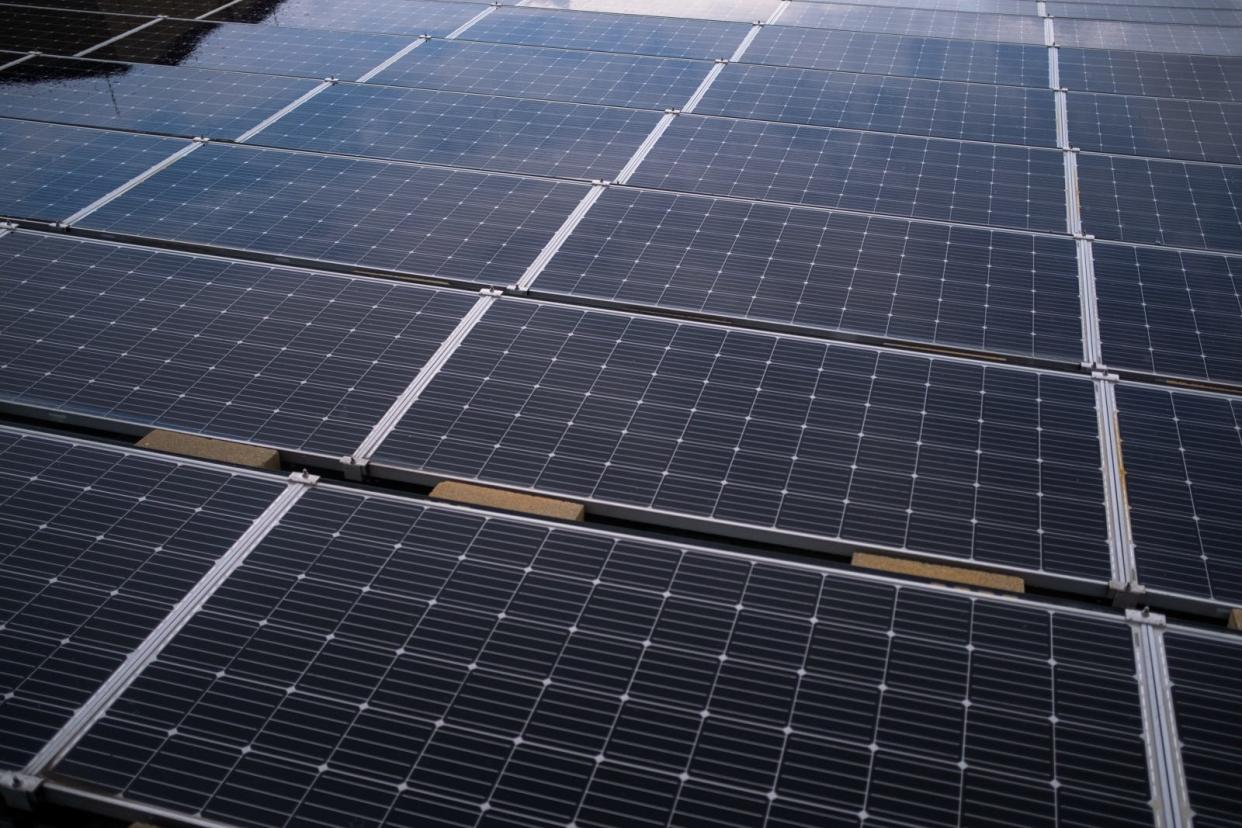Can Texas keep the lights on with renewable electric power alone? Here's what experts say.
Wind and solar generation are driving the expansion of the Texas electric grid and could account for half of the state's available power by the end of the decade, but a recent report by Rice University researchers warns that the coming imbalance could cripple the state during extreme weather emergencies unless more plants that can respond immediately to a surge in demand are brought on line.
"Texas is No. 1 in the nation in terms of existing wind capacity, as well as No. 1 in terms of planned capacity additions for wind and solar power," according to the report by the university's Baker Institute for Public Policy. "However, such aggressive growth of intermittent resources can compromise reliability when it is accompanied by little-to-no addition of dispatchable forms of generation, especially if system load continues to grow."
The report notes that while new natural gas generation facilities are being built in Texas, they "have merely compensated for the retirements of older coal facilities." However, Texas now has more than 200 times the wind generation capacity and more than 100 times the solar capacity.
Texas journalist Robert Bryce, who has authored six books related to energy production and demand and is the producer of a recently released documentary series called "Juice: Power, Politics & The Grid," said that no matter how much electricity is generated by renewable sources, there is no way to control when the wind will blow or the sun will shine.
"We cannot build our grid to be reliant on the weather," Bryce told the American-Statesman in an interview. "That's a fool's errand."
Do wind turbines kill birds? Are solar panels toxic? The truth behind green-energy debates
The Baker Institute report said that the power load, or demand, on the state's grid, which is managed by the Electric Reliability Council of Texas, has tracked the robust growth in the state's population over the past two decades. In a nutshell, that means on average the demand on the grid is about 19 gigawatts higher than it was in the early 2000s. And when it comes to peak demand, which generally occurs during times of extreme heat or freezing cold, electric demand reaches almost 30 gigawatts higher.
"This highlights a major point of emerging stress for the grid, because flexible, dispatchable resources are needed most acutely in peak periods," the report said. "Resource adequacy is not about average loads; it is about peak loads."
In November, voters approved a state constitutional amendment to establish a fund to finance 10 gigawatts of new dispatchable generation in Texas, but getting them up and running is likely to take several years.

Doug Lewin, president of the clean-power advocacy group Stoic Energy Consultants, said there are alternatives to relying on fossil fuels alone to manage peak demand. He said advances are being made in utility grade battery storage, which captures unused power from both renewable and traditional generation. In addition, he said, power stored in the batteries of electric vehicles can be tapped for household use when demand surges.
Texans also are becoming accustomed to adapting to calls for conservation when electricity providers warn that the grid is about to be strained, he said.
"Dispatchable power is one side, but dispatchable demand is another thing," said Lewin, who pointed out that during recent mild weather, the Texas grid was often powered with upward of 70% renewable generation. "We have a lot of demand on the grid; (consumers) can turn off or turn down when we're in periods of scarcity."
According to Advanced Energy United, an advocacy group that promotes policies that would lead to 100% clean-powered electricity, natural gas made up the largest source of Texas' generated electric power in 2022, with wind running a close second and coal a distant third. Solar power was fifth, behind nuclear power.

But the organization projects that natural gas and wind will generate about the same amount of electricity by 2030 and that wind will far surpass gas a decade later. Solar, meanwhile, will probably top the generation capacity of both coal and wind by next year, and coal's share of the Texas generation market will continue to decline.
Bryce said that not only should Texas promote additional gas-powered plants, but it should do more to pave the way for additional coal and nuclear plants to meet Texas' insatiable appetite for electricity.
Should Texas be nation's power grids? Casar, AOC file bill to do just that.
"We need to have dispatchable thermal generation," he said. "We should not be closing our coal plants. We should not be closing any gas plants. And over the long term, I hope that the state can provide proper incentives for nuclear. I'm adamantly pro-nuclear, (but) nuclear is a long way off."
The Baker Institute and the Advanced Energy group both said Texas needs to add to its inventory of high-voltage transmission lines, similar to the $7 billion project completed in 2014 that strung 3,600 miles of power lines to carry the electricity generated by the West Texas wind turbines to the state's population centers.
Replicating that would require a herculean effort, Bryce said. The building of new high-voltage transmission lines nationwide has been flat since the completion of the lines and towers Texas brought online a decade ago, he said. And the costs have almost tripled.
Bryce, in a post on his Substack page, published a chart showing that the cost per mile of high-voltage lines was about $1.35 million in 2008 when Texas' project was getting underway. The current per-mile cost is nearly $4 million.
"The number of line-miles of high voltage transmission over the last few years has been declining," he said. "So these claims that we hear routinely that, 'Oh, we're just going to massively expand the grid.' No, that is not going to happen."
This article originally appeared on Austin American-Statesman: Renewable energy: Texas needs more dispatchable electric generation
